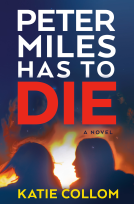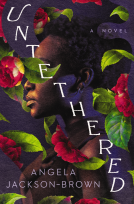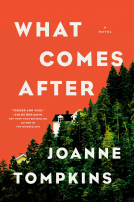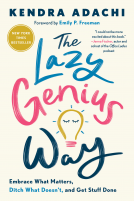
Framing the Black Panthers
The Spectacular Rise of a Black Power Icon
by Jane Rhodes
This title was previously available on NetGalley and is now archived.
Send NetGalley books directly to your Kindle or Kindle app
1
To read on a Kindle or Kindle app, please add kindle@netgalley.com as an approved email address to receive files in your Amazon account. Click here for step-by-step instructions.
2
Also find your Kindle email address within your Amazon account, and enter it here.
Pub Date Feb 01 2017 | Archive Date Feb 24 2017
Description
Jane Rhodes's acclaimed study examines the extraordinary staying power of the Black Panthers in the American imagination. Probing the group's longtime relationship to the media, Rhodes traces how the Panthers articulated their message through symbols and tactics the mass media could not resist. By exploiting press coverage through everything from posters to public appearances to photo ops, the Panthers created a linguistic and symbolic universe as salient today as during the group's heyday. They also pioneered a sophisticated version of mass media activism that powers contemporary African American protest, from the work of Black Lives Matter to Beyoncé's 2016 Super Bowl performance.
Featuring a timely new preface by the author, Framing the Black Panthers is a breakthrough reconsideration of a fascinating phenomenon.
Jane Rhodes is a professor of African American Studies at the University of Illinois at Chicago. She is the author of Mary Ann Shadd Cary: The Black Press and Protest in the Nineteenth Century.
Advance Praise
"No scholar has better documented and explained the Black Panther Party’s continuing hold on the popular imagination than Jane Rhodes. In a moment when black men and women dying at the hands of police is once again in the public eye, and insurgent political confrontation takes form through mediated images and pithy slogans, the republication of Framing the Black Panthers is both timely and relevant."--Nikhil Pal Singh, author of Black Is a Country: Race and the Unfinished Struggle for Democracy
Available Editions
| EDITION | Paperback |
| ISBN | 9780252082641 |
| PRICE | $22.95 (USD) |
| PAGES | 404 |
Links
Featured Reviews
 Reviewer 76613
Reviewer 76613
<b>"We might see the great power of the Black Panthers in their ability to create, manipulate, and subvert mass culture."</b>
<b>"To be black and conscious in America is to be in a constant state of rage."</b>
--Eldridge Cleaver
The Black Panthers are one of the most simultaneously notorious and least-understood movements in American history. It is impossible to analyze the Black Panthers Party without also discussing the media that exoticized and excoriated it. In <i>Framing the Black Panthers,</i> Rhodes seeks to illuminate the relationship between the Black Panthers and the media, whose exploitation and commodification gave the Panthers the visibility that both granted momentum and eventually aided in its destruction. While it's not suitable as an introduction to the history of the Black Panther Party--for that, I'd suggest <a href=""><i>Black Against Empire</i></a> for that --<i>The Framing of the Black Panther Party</i> explores a critical aspect of the story: the Panthers' struggle to harness and control the media and public perception, and their ultimate inability to fully shape or control their image.
<i>Framing the Black Panthers</i> starts by examining the political origins of the Panthers and the way in which the media shaped perceptions of the Civil Rights Movement, such as newspapers' portrayal of Rosa Parks as a spontaneous protester rather than part of a greater movement, or the way that ever-present violence was downplayed in favor of the neater story of nonviolent protest for well-defined civil liberties. Blacks protecting themselves with firearms from white gangs come to lynch them is not a new story. The new element-- and as Rhodes points out, not even this was actually novel-- was in the Panthers' portrayal of the police and the government as yet another racist gang come to invade and attack the black community. And thus the powerful statement the Panthers made with their guns and berets: that the justice system didn't have a copyright on armed and uniformed defenders of its citizens.
The Panthers were a conscious paradox, abandoning nonviolence while portraying themselves as disciplined defenders, simultaneously embracing and rejecting the stereotype of the angry, virile, destructive Black man. Huey Newton and Eldridge Cleaver, in particular, saw Black Power as the reclamation and exaltation of Black manhood, yet employed discipline to escape characterization as "black brute." Rhodes argues that the guns that the BPP so famously embraced were at least partially utilized as a media spectacle to gain attention to the struggle.Their symbols--the guns, the berets, the upraised fists, phrases such as "pig" and "power to the people"--all became cultural touchstones with very different interpretations for different communities, in part because of this paradox. By escaping respectability politics, the BPP became the emblem of Black militancy.
While we want to view the media as dispassionate and unbiased chroniclers of current events, in actuality, they shape the narrative and therefore public perception and reaction. Rhodes highlights the interdependence between the Panthers and the media: the Panthers used the media to gain notoriety and use that notoriety to gain momentum and a modicum of safety from a government that sought to silence them by any means possible. However, the media had their own well-defined agenda: to exotify, sensationalize, and commodify the party while still upholding the viewpoints of their readers. As Rhodes puts it:
<blockquote>"The news media, in particular, had a conflicting social agenda--to appease the power elites of whom they were a part and to uphold societal norms while professing some concern for the problem of racial inequality. [...] Because the press is primarily invested in reinforcing normative values, one should not expect them to seriously interrogate the complexities of a group such as the Black Panthers."</blockquote>
The rise of television eroded media responsibility even more by incentivizing the reduction of complex stories into their most sensational, easily digested elements.
<blockquote>"Most damning, perhaps, was that the media was deeply invested in the self-fulfilling prophecy [of violence] it advanced."</blockquote>
As media portrayal spiraled out of control with violent repercussions, the Panthers sought to control their own image by restricting media access and broadcasting their own voices via the Panther paper, but they had become a "salable commodity," both for those who hawked sensational tales of violence and depravity, and for "white guilt" liberals embracing "radical chic."
Rhodes explores the narrative and symbolic frames that the media employed when reporting on the BPP, including the extreme partisanship of outlets such as the Oakland Tribune and the Golden Gater. Yet the book itself occasionally uses the same sort of phrasing that it accuses these papers of using, promoting, if perhaps unintentionally, its own framing of events. For example, Rhodes calls William Lee Brent's holdup and shootout <i>"a costly mistake"</i> and terms the ex-Panthers who made accusations of sexual abuse <i>"disgruntled"</i>, employing language that implicitly dismisses the accusations. The BPP was a complex movement, both flawed and glorious, despite media attempts to flatten it into a simple "good" or "evil." It was constructed as a paradox, and remained one throughout its lifetime, simultaneously promoting "Black self-love" and embracing a patriarchal form of homophobia and sexism. Rhodes dives deep into her subject, exploring the goals and outcomes of the Breakfast Program, the relationships between the Panthers and the Peace and Freedom Party in terms of press gains, the Panthers' worldwide influence, including the Black Panther movement that formed in the UK, and more.
For me, the one place where <i>Framing the Black Panthers</i> fell short was in the paucity of images. The book routinely describes headlines, photographs, and illustrations in words, yet I counted less than twenty photographs in the entire book, shoved together into a section at the center. I found myself performing image search after image search on Google to find the photographs or headlines described in the text. There is something powerful about the images themselves, and I think the book would greatly benefit from showing the images it so carefully describes. For example, take one of the Doonesbury cartoons mentioned, or the famous sketch of Bobby Seale when he was gagged and chained to his chair in court:
<img src="http://www.richsamuels.com/nbcmm/chicago_conspiracy_trial/images/bobby_seale_bound.jpg"/>
<img src="http://images.gocomics.com/images/doonesbury/strip/retro/yale/dbyale81.gif"/>
I think the book would be much more powerful if the inclusion of visual elements doubled its length.
<i>Framing the Black Panthers</i> is a wholesale indictment of the media, but also an exploration of the complex relationship between media and subject. As is now publicly acknowledged, the BPP, termed by Hoover <i>"The greatest threat to internal security of the country,"</i> was under constant assault by the government and by the media. As we again enter an era of Civil Rights struggles, I believe it is critical to understand our own past with the hope that it may give us insight into our future. The media desire for sensationalism fed public fear, which in turn fueled the police's belief that the Panthers "would someday invade their homes for the purpose of killing wives and children" (Commission of Inquiry into the Black Panthers and Law Enforcement). Repercussions of the mutual distrust fed by media frenzy continues to create tragedy today. With the creation of new movements like the Brutality Prevention Project, perhaps Panthers' dream of community defense can finally be achieved, with cellphone cameras instead of guns.
This made me realize just how woefully inadequate my education has been. The people in power get to write the history, and unfortunately that means a lot of things are left out of a public education. This should really be required reading in schools across the country. A great way to fight back against the propaganda being shoved down the throats of students in US public schools. I'm embarrassed by how little I knew of the rich history of what is still today such a strong influence in American history, culture, and politics.
 Donna H, Reviewer
Donna H, Reviewer
Being a product of the era, as well as a factor in the demographic this study represents, I was anxious to delve into this work. Please pardon my reference to the Black Panther Party as "the Panthers"; but that was how I came into knowlededge of them; and it's how I reference them to this day. Professor Jane Rhodes goes indepth about lesser-known details as well as those more commonly known. She talks about how the community work of the organization was ignored by authorities and downplayed by the media in exchange for newsbreaking headlines.
There is mention of "a companion book, Panther:The Pictorial History of the Black Panthers and the Story Behind the Film," that offers a serious look at how the group fit into African American history.
Being a reader who looks for how the author nestles a book's title into the text, I was most enlightened with her explanation about this book's title. Like the majority, I began my read with the impression that Prof Rhodes was going to break down to the reader how the Panthers were framed (as in "set up") by the media as well as local, state and national authorities. Actually, she has done that. But she lets us in on her double entrende, in that the book actually demonstrates how the organization was placed within the framework of the media. Both concepts of framing are covered in this work.
"Framing the Black Panthers" will appeal to both the nostalgic and the scholarly reader. I recommend it to both.
I count myself fortunate for the opportunity to review this revised edition with its references to slavery in America while listening to an extensive audiobook, by a different author, on the topic. The confirmations between them are mind-settling for this reader. This review is of a complimentary digital copy from the publisher provided through NetGalley in exchange for an honest review. At the request of the publisher, quoted material has been withheld for comparison to the final text.












